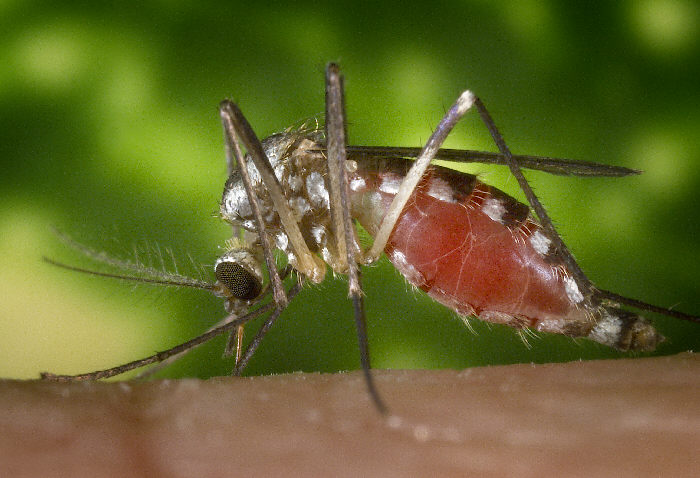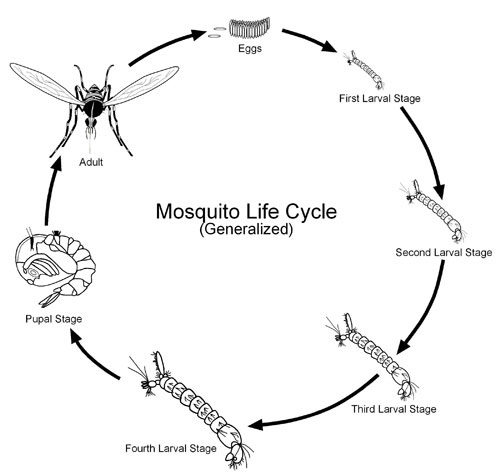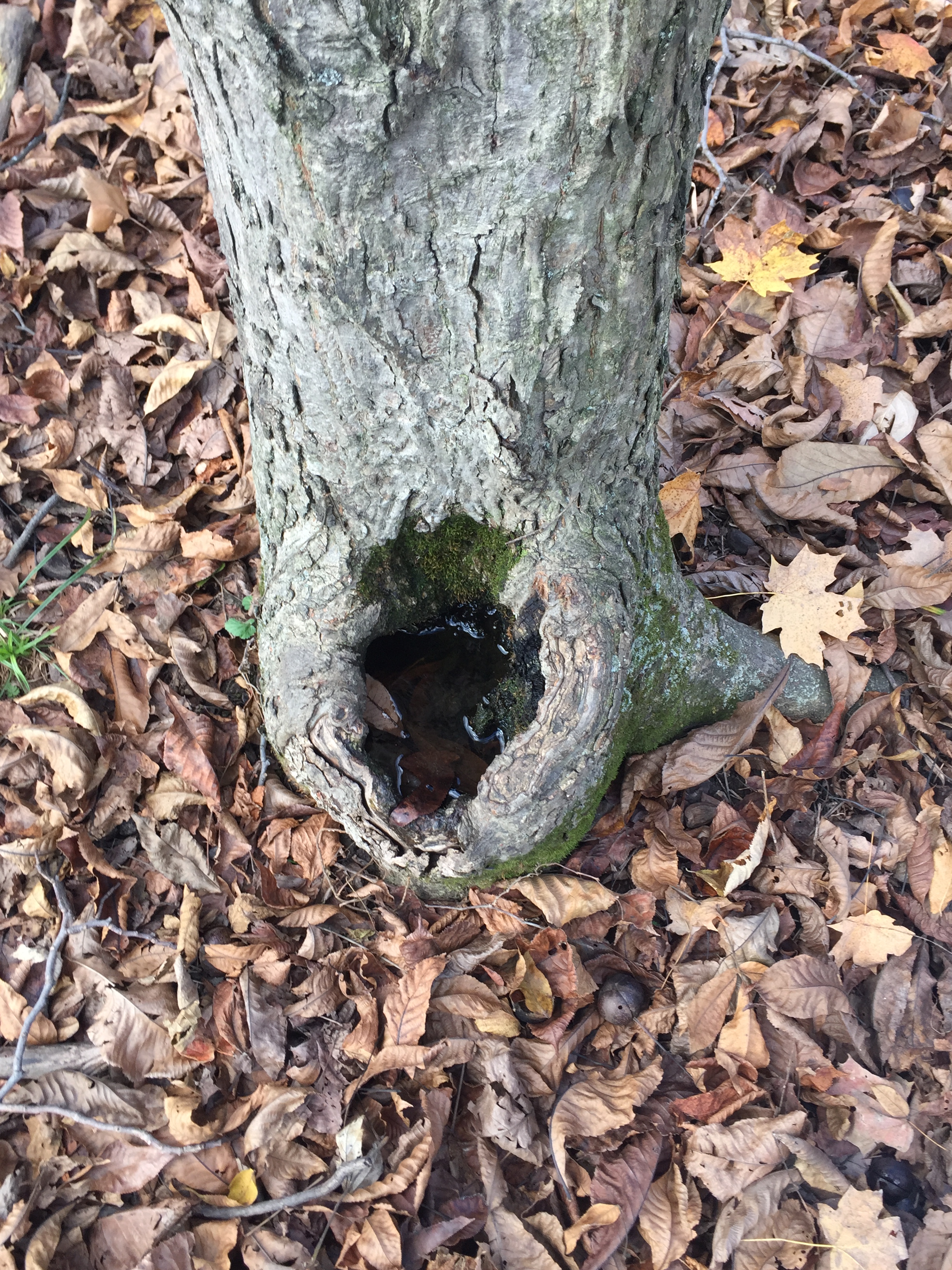Aedes triseriatus
Common names: Eastern tree hole mosquito

Aedes triseriatus. Centers for Disease Control and Prevention.
- Geographic Distribution
Aedes triseriatus mosquitoes are found in the eastern half of the US, including Indiana.
- Life Cycle
The mosquito life cycle consists of four stages (egg, larva, pupa, and adult). The life cycle usually takes 2 weeks to complete, but can take much longer, as eggs laid in late summer can survive the winter and hatch during the following season. These mosquitoes are most active in the early morning and late afternoon during the mosquito season (in Indiana, this is usually from May to October). Only female mosquitoes bite animals and people. Aedes triseriatus mosquitoes normally lay their eggs above pools of water that accumulate in tree holes or in man-made containers (e.g., discarded tires). The eggs hatch when enough water accumulates to cover the eggs.

Mosquito life cycle. Illustration: Scott Charlesworth, Purdue University.
Tree hole containing water; preferred breeding site for Aedes triseriatus mosquitoes. Indiana State Department of Health.
- Commonly Associated Diseases
- Prevention
The best way to prevent diseases associated with Aedes triseriatus mosquitoes is to avoid mosquito bites. Visit our mosquito prevention page for more information.
Filling treeholes to eliminate mosquito breeding sites is another way to prevent diseases associated with Aedes triseriatus mosquitoes. To learn more about filling treeholes, click here.
Page Last Updated: February 17, 2023


